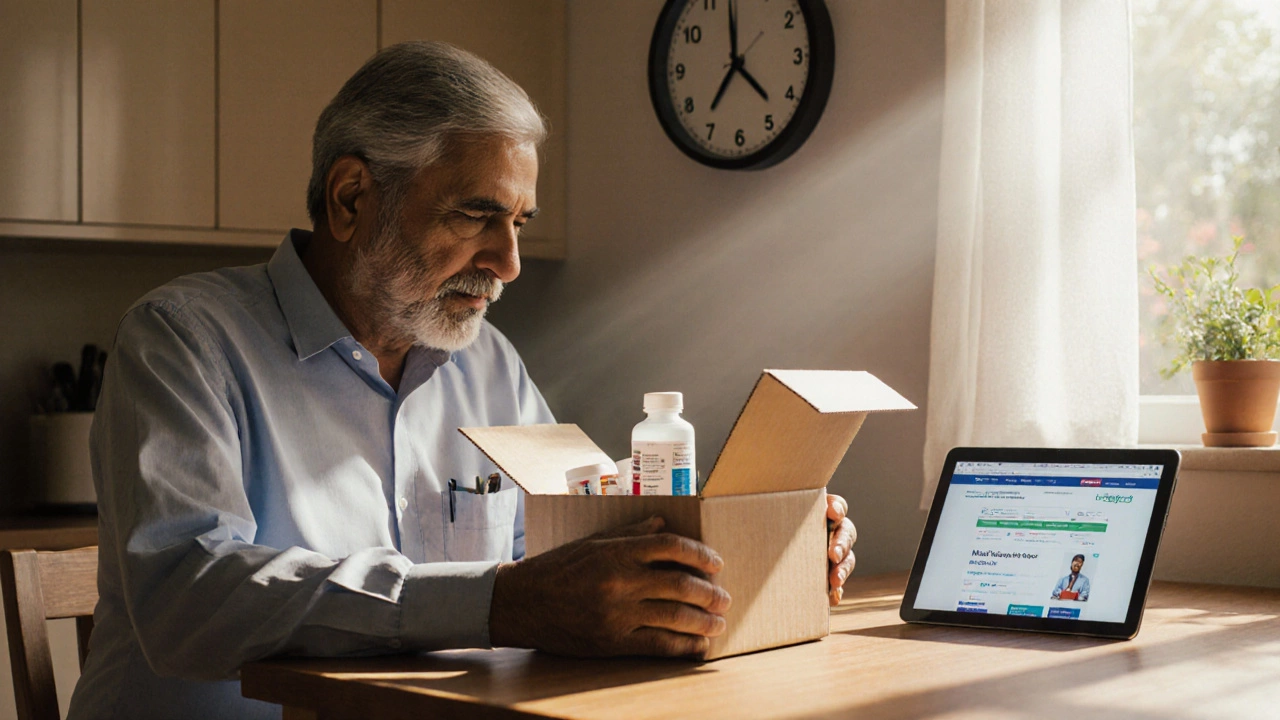Prescription Shipping Issues: What You Need to Know
When dealing with prescription shipping issues, the setbacks, errors, or legal snags that arise while a medication travels from a pharmacy to your doorstep. Also called drug delivery problems, this topic touches on online pharmacy, digital platforms that dispense prescriptions and ship them directly to patients and telemedicine, remote medical consultations that often trigger electronic prescriptions. Together they create a chain where each link can affect the next – a slow lab test, a missed verification step, or a customs hold can all turn a simple refill into a month‑long wait. Understanding how these pieces fit helps you spot trouble before it stalls your treatment.
Why Shipping Gets Stuck: Key Factors and Their Impact
First, regulatory compliance acts like a gatekeeper. Indian drug laws require each shipment to carry a validated prescription, a sealed label, and often a temperature‑controlled package. If any paperwork is missing, the carrier may return the box or hold it at a customs hub, adding days to the timeline. Second, the drug delivery, the logistics network that moves medicines from pharmacy to patient itself varies widely: large chain pharmacies usually have dedicated couriers, while smaller online dispensaries rely on third‑party services that might not prioritize medical parcels. Third, prescription cost, the total price you pay including drug price, shipping fees, and any insurance copay can influence the carrier choice; lower‑cost options often mean slower, less‑tracked shipments. Fourth, seasonal spikes—like flu season or pandemic‑related buying frenzies—overload both pharmacies and couriers, leading to missed windows and bulk‑handling errors. Finally, human error at any stage—incorrect address entry, mislabeled container, or a pharmacy staffer forgetting to verify a refill—creates a domino effect that delays the whole process.
So, what can you do to keep your meds moving? Start by confirming that the online pharmacy you choose is licensed by the Drug Controller General of India and that it offers real‑time tracking. Ask for a clear copy of the prescription PDF to verify that the doctor’s signature, dosage, and patient details match the order. When you receive a tracking number, monitor it daily and contact the carrier the moment the status stalls for more than 24 hours. If you use telemedicine services, request that the doctor send the prescription directly to the pharmacy rather than via email, reducing the chance of a transcription mistake. Keep a backup plan: a local pharmacy that can fill the same script in case the shipment is delayed beyond a critical treatment window. By treating the whole chain as a single system—doctor, pharmacy, carrier, and regulator—you turn a potential crisis into a manageable checklist.
In the list below you’ll find articles that break down each piece of this puzzle: from how to spot a legit online pharmacy, to the hidden fees that inflate prescription cost, to real‑world stories of delivery hiccups and what patients did to fix them. Dive in to get actionable tips, avoid common pitfalls, and ensure your next prescription arrives on time, every time.

Mail‑Order Pharmacy Disadvantage: What You Need to Know
Explore the key disadvantages of using a mail‑order pharmacy, from shipping delays to privacy risks, and learn practical steps to stay safe.

What is the Hardest Part of IVF?
Mar, 23 2025



